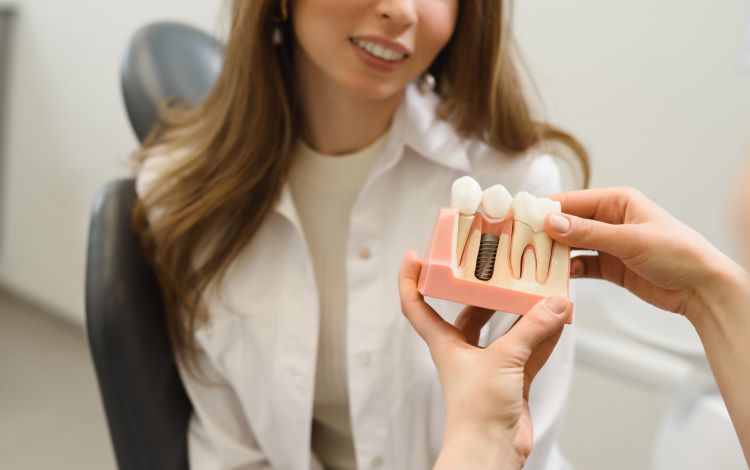Screwless Dental Implants: A Modern Alternative
Screwless dental implants represent an innovative approach to tooth replacement that eliminates the need for traditional screws to secure the crown to the implant post. This technology uses alternative attachment methods such as cement bonding or specialized locking mechanisms, offering patients a different pathway to restore their smile. As dental technology continues to evolve, these implant systems are gaining attention for their unique benefits and simplified maintenance procedures.

Understanding the Benefits of Screwless Dental Implants
The primary advantage of screwless dental implants lies in their streamlined design and reduced complexity. Without screw access holes, the crown maintains a more natural appearance and structural integrity. The cement-retained or friction-fit crowns eliminate the small access holes typically found in screw-retained implants, which can sometimes collect food particles or weaken the crown structure.
Patients often appreciate the smoother surface and improved aesthetics that screwless systems provide. The absence of screw holes means the crown can be shaped more naturally, particularly important for front teeth where appearance matters most. Additionally, the sealed design may reduce the risk of bacterial infiltration around the implant site.
From a maintenance perspective, screwless implants can offer certain advantages. There are no screws to potentially loosen over time, which can be a concern with traditional implant systems. However, this also means that if repairs are needed, the crown may need to be cut off rather than simply unscrewed, which is an important consideration for long-term planning.
The Rise of Screwless Dental Implants: Benefits You Should Know
The growing popularity of screwless dental implants stems from several practical benefits that address common concerns with traditional implant systems. One significant advantage is the reduced risk of mechanical complications related to screw loosening, which affects approximately 5-12% of traditional implant restorations according to dental research.
The manufacturing process for screwless crowns can be more straightforward, potentially reducing production time and costs. The cement-retained approach allows for better passive fit of the restoration, which can improve the longevity of both the crown and the underlying implant. This passive fit reduces stress on the implant components and surrounding bone tissue.
Patient comfort during the restoration process may also be enhanced with screwless systems. The cementation process is typically faster and more comfortable than the precise torquing required for screw-retained crowns. This can be particularly beneficial for patients with limited mouth opening or those who experience anxiety during dental procedures.
How Screwless Dental Implants Are Changing Modern Dentistry
The integration of screwless implant technology is influencing dental practice in several meaningful ways. Dentists are finding that these systems can simplify certain aspects of implant dentistry while potentially improving patient outcomes. The streamlined approach reduces the number of small components that need to be managed during the restoration process.
Laboratory workflows have also adapted to accommodate screwless designs, with many dental labs reporting more efficient production processes for cement-retained crowns. This efficiency can translate to shorter turnaround times for patients and potentially reduced costs for dental practices.
The technology is particularly valuable in challenging aesthetic cases where eliminating screw access holes can significantly improve the final appearance. This has made screwless implants increasingly popular for front tooth replacements and other highly visible areas of the mouth.
However, the dental community also recognizes that screwless systems may present challenges in terms of retrievability. Traditional screw-retained crowns can be easily removed for maintenance or repair, while cement-retained crowns may require crown sectioning for removal, potentially necessitating complete crown replacement.
Several dental implant manufacturers now offer screwless implant systems with varying approaches to crown attachment. The cost of screwless dental implants typically ranges from $3,000 to $6,000 per tooth, including the implant, abutment, and crown, though prices can vary significantly based on location and specific case requirements.
| System Type | Manufacturer | Cost Range | Key Features |
|---|---|---|---|
| Cement-Retained | Straumann | $3,500-$5,500 | Titanium construction, multiple crown options |
| Friction-Fit | Nobel Biocare | $4,000-$6,000 | Precise manufacturing, aesthetic focus |
| Hybrid Retention | Zimmer Biomet | $3,200-$5,200 | Combination retention methods, versatile applications |
Prices, rates, or cost estimates mentioned in this article are based on the latest available information but may change over time. Independent research is advised before making financial decisions.
Recovery and Long-Term Considerations
The healing process for screwless dental implants generally follows the same timeline as traditional implant systems, with initial healing taking 3-6 months for osseointegration. However, the final restoration phase may be completed more quickly due to the simplified crown attachment process.
Long-term success rates for screwless implants appear comparable to traditional screw-retained systems when properly maintained. Regular dental checkups remain essential for monitoring the implant site and surrounding tissues. Patients should maintain excellent oral hygiene and may benefit from professional cleanings every 3-4 months to ensure optimal implant health.
The choice between screwless and traditional implant systems should be made in consultation with a qualified dental professional who can assess individual needs, aesthetic requirements, and long-term maintenance preferences. Each system offers distinct advantages, and the best choice depends on specific clinical circumstances and patient priorities.
This article is for informational purposes only and should not be considered medical advice. Please consult a qualified healthcare professional for personalized guidance and treatment.




